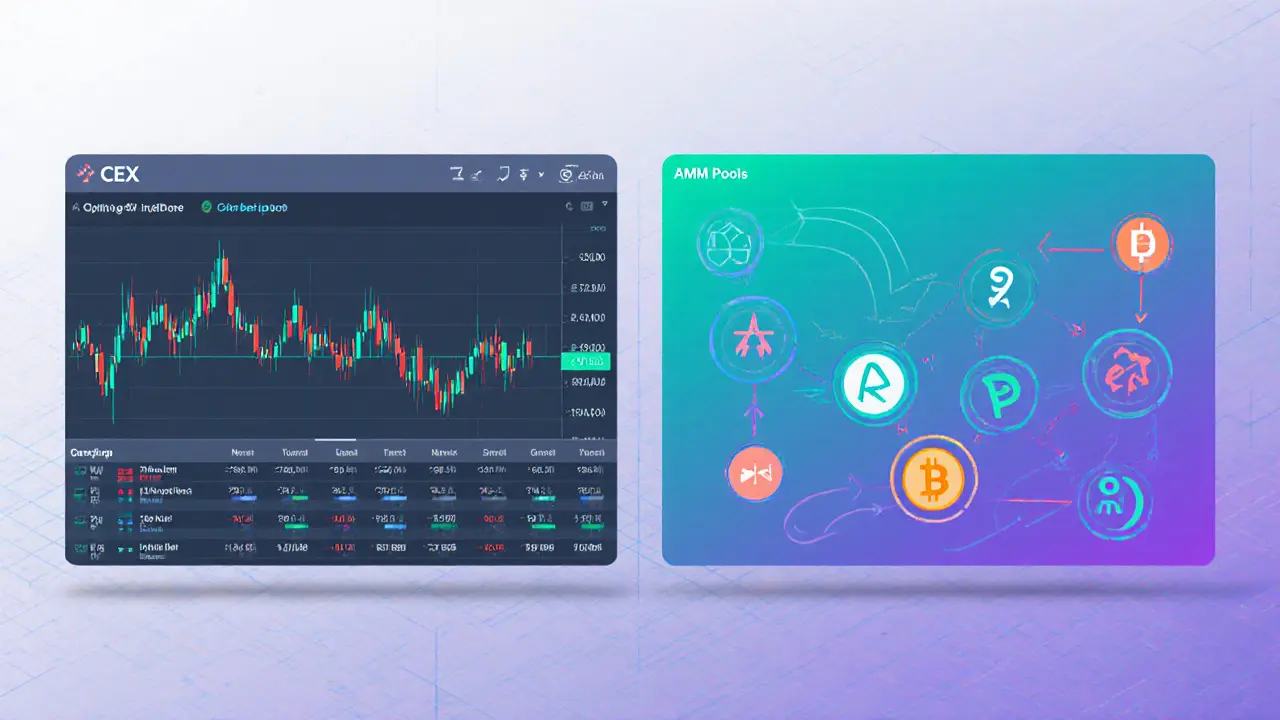Order Book: The Core of Crypto Market Transparency
When working with order book, a real‑time list of all buy and sell orders for a specific cryptocurrency on an exchange. Also known as market depth chart, it lets traders see where Liquidity, the amount of crypto readily available to trade without causing big price swings sits and how price might move. The Exchange, the platform that hosts order books and matches buyers with sellers publishes this data every second, so anyone can read the bids (buy orders) on the left side and the asks (sell orders) on the right side. The spread between the highest bid and the lowest ask tells you the immediate cost of crossing the market. If you’re new, think of the order book as a live scoreboard: each line shows a price level, the amount of crypto waiting at that price, and whether it’s a demand or supply side. Understanding this layout is the first step to spotting thin markets, hidden support zones, or sudden demand spikes that can trigger price moves.
The order book does more than display numbers; it builds the concept of market depth. Depth is the cumulative volume you’d have to consume to move the price a certain distance. Deep markets have many orders spread across price levels, which means larger trades can happen with minimal impact. Shallow markets, on the other hand, show a thin wall of orders—just a few lines—so a modest buy can push the price up quickly. This depth directly influences the bid‑ask spread: tight spreads usually appear in deep, liquid markets, while wide spreads signal low liquidity or high volatility. Another key factor is the trading pair you’re looking at. BTC/USDT, ETH/BTC, or any altcoin pair will have its own order book shape because the underlying assets differ in supply, demand, and user base. When a popular pair like BTC/USDT sees a surge of buy orders, the entire book can shift, creating a new temporary resistance level. Market makers—companies that constantly place buy and sell orders—help keep the book balanced. They add liquidity, narrow spreads, and smooth price swings, but they can also withdraw quickly during stress, causing the book to collapse and prices to swing wildly. By watching how the order book responds to news, large wallet movements, or exchange announcements, you can gauge the sentiment of the crowd in real time.
Armed with this foundation, you’ll find the articles below dive deeper into the mechanics that shape order books, from exchange licensing that affects data quality to token‑specific order book quirks on decentralized platforms. Whether you’re hunting for the next low‑liquidity gem, evaluating a new exchange’s depth, or learning how market makers protect you from slippage, the collection gives you actionable insights to apply right away.Why Order Book Matters for Every Trader

Liquidity on DEXs vs Centralized Exchanges: Key Differences and How to Choose
Nov 17, 2024, Posted by Ronan Caverly
Explore how liquidity works on DEXs versus centralized exchanges, covering slippage, speed, incentives, risks, and tips for choosing the right platform.
MORESEARCH HERE
Categories
TAGS
- decentralized exchange
- crypto exchange review
- cryptocurrency
- crypto coin
- CoinMarketCap airdrop
- smart contracts
- tokenomics
- cryptocurrency exchange safety
- crypto exchange
- cryptocurrency airdrop
- crypto airdrop
- cryptocurrency exchange
- crypto airdrop guide
- blockchain token distribution
- DeFi
- crypto exchange scam
- crypto airdrop 2025
- Ethereum
- cross-chain interoperability
- ERC-20
